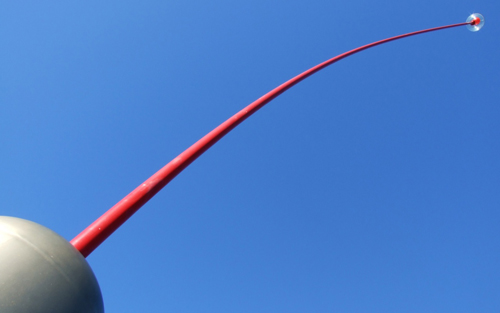
Wind Wand, Len Lye, conceived in the 1960s and realized permanently in 2001, 21 years after the artist’s death.
We were recently introduced to the work of Len Lye (1901-1980), a native New Zealander and a great modern artist and experimental filmmaker. Early in his artistic career he was convinced of the importance of incorporating movement into modern art and one of Len Lye’s most prolific artistic mediums was kinetic sculpture. Many of his creations were not constructible during his lifetime but have since been realized in cities such as New Plymouth (Wind Wand) and Wellington (Water Whirler).
It is interesting to note the similarities between Len Lye’s work and the “Windulum” concept by Dick Hodges which takes a similar form, derived biomemetically as inspired from the way that trees and other vertical stalks behave in the wind. Rather than conceive of the form as art, Hodges Engineering has focused on the generation of energy via piezoelectric plates along the length of the stalk.
Above is a video about the Windulum.

The LAGI 2010 (second place mention) design by Atelier dna, Windstalk, takes this idea of energy generation back into the realm of public art in a way that Len Lye may have appreciated. At the same time it has added a torque generator and energy storage to the design of the foundation in an innovative technological evolution to the Windulum piezoelectrics-only model.
And to round out the collection, the recently announced honorable mention design for the Solar Park South design competition for Calabria, Growing Energy, by Marcos Castaings of Uraguay, has employed a similar design (with a citation of the Windulum project as inspiration). Of the four, the Windulum is the only one not to incorporate LED lighting into the tip of the stalk.
Related Posts
1 Comment
Add comment Cancel reply
This site uses Akismet to reduce spam. Learn how your comment data is processed.

[…] This is similar to the technology used in Windstalk (from the 2010 LAGI design competition) and Electric Meadow (from the 2012 LAGI design competition). Another article dedicated to the formal attributes of these designs can be read here. […]